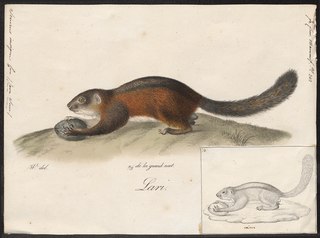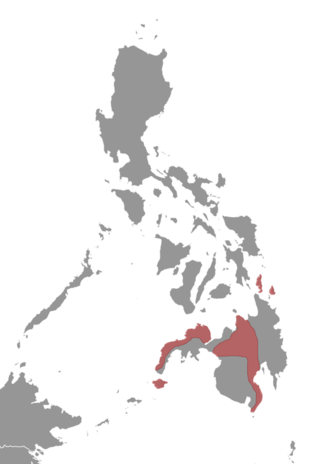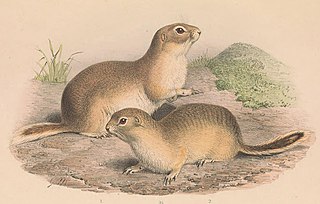
Xerini is a tribe of ground squirrels occurring in Africa and Asia. With the tribes Marmotini and Protoxerini, they form the subfamily Xerinae. There are five living genera—Xerus, the unstriped ground squirrel; Euxerus, the striped ground squirrel; Geosciurus, the Cape and mountain ground squirrels; Atlantoxerus, containing the living Barbary ground squirrel of North Africa and some extinct species; and Spermophilopsis, containing the long-clawed ground squirrel of Central Asia.

Striped ground squirrels form a taxon of squirrels under the subfamily Callosciurinae. They are only found in Southeast Asia. Species in this genus include:

Callosciurus is a genus of squirrels collectively referred to as the "beautiful squirrels". They are found mainly in Southeast Asia, though a few species also occur in Nepal, northeastern India, Bangladesh and southern China. Several of the species have settled on islands. In total, the genus contains 15 species and numerous varieties and subspecies. The genera Glyphotes, Rubrisciurus, and Tamiops have sometimes been included in Callosciurus.

The black flying squirrel or large black flying squirrel is a species of rodent in the family Sciuridae. It is found in Brunei, Indonesia, and Malaysia; its habitat is primary and secondary forests and gardens where it uses tree hollows. It feeds on fruits, nuts and other vegetable matter. It is likely not threatened and is adaptable to habitat loss. Black flying squirrels tend to have smaller populations than other squirrels because female black flying squirrels breed infrequently and have a small litter size of just one young.
The Kashmir flying squirrel is a species of rodent in the family Sciuridae. It is monotypic within the genus Eoglaucomys. It is found in Afghanistan, India and Pakistan. Its natural habitat is subtropical or tropical dry forests. It is threatened by habitat loss. The Afghan flying squirrel is usually considered a subspecies.

The sculptor squirrel or Bornean pygmy squirrel is a species of rodent in the family Sciuridae. It was described by Michael Rogers Oldfield Thomas in 1898. It is monotypic within the genus Glyphotes. It is endemic to northern Borneo in Sabah and Sarawak (Malaysia) and inhabits areas elevated at 285–1,800 metres (935–5,906 ft).

The Basilan flying squirrel is a species of rodent in the family Sciuridae. It is endemic to the Philippines. It is often confused with the mindanao flying squirrel.

The Alashan ground squirrel is a species of squirrel. It is native to China and Mongolia.

The Xerinae comprise a subfamily of squirrels, many of which are highly terrestrial. It includes the tribes Marmotini, Xerini, and Protoxerini.







